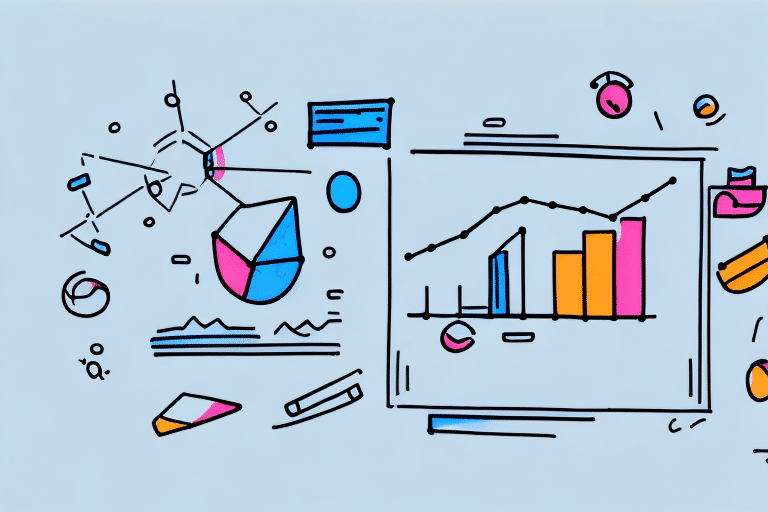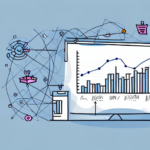The Importance of Accurate Demand Forecasting
Accurate demand forecasting has become a cornerstone of effective business planning in today’s dynamic market environment. With advancements in technology and heightened consumer awareness, companies require precise and reliable data to make informed decisions that mitigate risks and optimize profits. This article delves into the significance of accurate demand forecasting, explores fundamental and advanced forecasting techniques, discusses the role of technology, and provides insights into overcoming common challenges to maintain a competitive edge.
Understanding the Basics of Demand Forecasting
What is Demand Forecasting?
Demand forecasting is the systematic process by which companies predict the future demand for their products or services. By analyzing historical sales data, market trends, and other relevant metrics, businesses can estimate future customer demand, enabling them to make strategic decisions regarding production, inventory, and marketing. According to a McKinsey report, effective demand forecasting can improve inventory turns by up to 30%.
Common Forecasting Methods
- Trend Analysis: Identifies patterns or trends in historical data to project future demand.
- Moving Average: Utilizes the average of sales data over a specific period to smooth out fluctuations.
- Regression Analysis: Examines the relationship between demand and one or more independent variables.
- Exponential Smoothing: Applies decreasing weights to older data to give more importance to recent trends.
The choice of forecasting method depends on factors such as the nature of the product, market conditions, and data availability.
Advanced Techniques to Enhance Forecasting Accuracy
Machine Learning and Artificial Intelligence
The integration of machine learning (ML) and artificial intelligence (AI) into demand forecasting has revolutionized the accuracy and reliability of predictions. According to a Gartner report, businesses leveraging AI-driven forecasting tools have seen up to a 20% improvement in forecast accuracy.
Collaborative Planning, Forecasting, and Replenishment (CPFR)
CPFR is a method where suppliers and retailers collaborate to share information and align their forecasting efforts. This collaboration leads to reduced lead times, improved inventory management, and enhanced customer satisfaction. A study by Harvard Business Review highlights that companies implementing CPFR have experienced a 15% reduction in inventory costs.
Incorporating External Factors
Beyond internal data, incorporating external factors such as economic indicators, weather patterns, and social trends can significantly enhance forecasting accuracy. For instance, integrating economic data from sources like the Bureau of Labor Statistics can help predict demand fluctuations related to economic cycles.
The Role of Technology in Demand Forecasting
Advanced Analytics and Software Solutions
Modern demand forecasting relies heavily on specialized software and analytics tools that can process large volumes of data to identify patterns and trends. Tools like Tableau and Microsoft Excel offer robust data visualization and analysis capabilities that enhance the forecasting process.
Automation in Forecasting
Automation reduces the time and effort required to collect and analyze data, allowing businesses to focus on strategic decision-making. Automated forecasting tools minimize human error and ensure consistent, reliable predictions. According to a Forrester study, companies that implemented automated forecasting systems saw a 25% increase in efficiency.
Data Integration Capabilities
Integrating data from multiple sources provides a comprehensive view of market dynamics and customer behavior. This holistic approach enables more accurate demand forecasts and better strategic planning. Solutions like SAP Integrated Business Planning facilitate seamless data integration and real-time analytics.
Selecting the Right Forecasting Tools for Your Business
Factors to Consider
When choosing demand forecasting tools, businesses should consider factors such as ease of use, scalability, integration capabilities, and the specific needs of their industry. Additionally, the tool should support the forecasting methods that best align with the company’s data and objectives.
Customization and Integration
Customization is crucial for addressing unique business requirements. Tools that offer customizable dashboards, reporting features, and integration with existing systems provide greater flexibility and effectiveness. Evaluating tools based on their ability to adapt to your business processes is essential for long-term success.
Overcoming Challenges in Demand Forecasting
Handling Inaccurate Data
Inaccurate or incomplete data can undermine the entire forecasting process. Implementing robust data collection and validation procedures ensures that the data used is reliable. Leveraging data cleansing tools and maintaining high data quality standards are critical steps in mitigating this challenge.
Managing Complexity in Collaborative Planning
Collaborative planning involving multiple teams can introduce complexity, leading to potential inaccuracies. Establishing clear communication channels and standardized processes helps streamline collaboration and maintain forecasting accuracy.
Adapting to Market Changes
Market conditions are constantly evolving, and demand forecasting models must adapt accordingly. Regularly updating forecasting models and incorporating real-time data enable businesses to respond swiftly to market shifts.
Future Trends and Best Practices in Demand Forecasting
Emerging Technologies
The future of demand forecasting is poised to embrace more sophisticated technologies such as blockchain for enhanced data transparency and IoT for real-time data collection. These advancements will further improve the accuracy and reliability of demand forecasts.
Best Practices for Sustaining Forecast Accuracy
- Continuous Improvement: Regularly review and refine forecasting models to incorporate new data and trends.
- Cross-Functional Collaboration: Foster collaboration between sales, marketing, and operations teams to enhance forecasting accuracy.
- Training and Development: Invest in training employees on the latest forecasting tools and techniques to maximize their effectiveness.
Predictions for Demand Forecasting
Experts predict that demand forecasting will become even more integrated with AI and machine learning, enabling predictive analytics that can anticipate market changes with greater precision. Additionally, the increasing availability of big data will provide deeper insights into consumer behavior, further refining forecasting accuracy.
Conclusion
In today’s competitive landscape, accurate demand forecasting is not just a strategic advantage but a necessity for sustainable business growth. By leveraging advanced forecasting techniques, embracing technology, and adhering to best practices, businesses can enhance their decision-making processes, optimize inventory management, and ultimately improve customer satisfaction. As the field of demand forecasting continues to evolve, staying abreast of emerging trends and continuously refining forecasting methods will be essential for maintaining a competitive edge in the market.






















